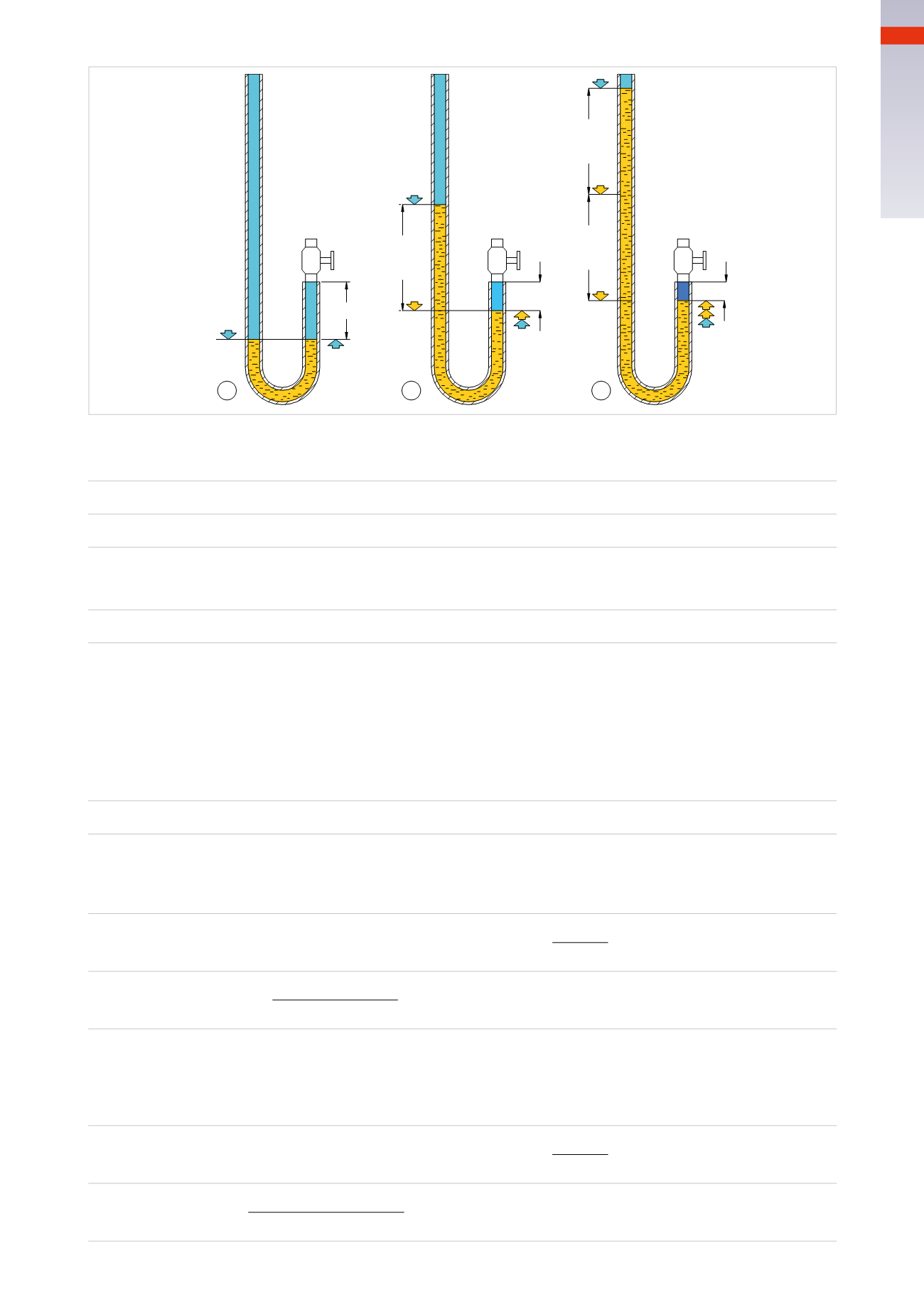

PHYSICS
X
1/2X
1
2
1/3X
3
76cm
76cm
76cm
Fig. 8
Literal values are assigned to variables:
Initial Pressure
(Pos.1) =
p
i
Final Pressure (Pos. 2) =
p
f
Initial Volume
(Pos.1) =
V
i
Final Volume (Pos.2) =
V
f
From experimental results it can be determined that:
p
i
: p
f
=
V
f
: V
i
p
i
* V
i
=
p
f
* V
f
This property was outlined by Irish chemist Robert Boyle (1627-1691) and is set forth in the law that bears his
name:
at a constant temperature, the volume occupied by a gaseous mass is inversely proportional to the
pressure towhich the gas has been submitted
.
That is, if the pressure doubles, the volume of the gaseous mass will be reduced to half, in the same way, if the
pressure is reduced to a third, the volume triples.
If
p
indicates the gas pressure and
V
its volume, Boyle’s law can also be expressedwith the formula:
p * V
=
constant
Example 1
: a tank with volume
V
i
= 2
m
3
is subjected to the pressure
p
i
= 5
bar
. What will its volume be at
atmospheric pressure, keeping the temperature constant?
p
i
* V
i
=
p
f
* V
f
V
f
=
V
i
* p
i
p
f
2
[cm
3
]
* 5
[bar]
=10
cm
3
V
f
=
10
cm
3
1
[bar]
Example 2
: an air mass undergoes a pressure
p
i
= 2,5
bar
and occupies a volume
V
i
= 0,5
m³
at a constant
temperature, an increase in pressure reduces the volume
V
f
=0,1
m³
.
What is the new pressure
p
f
?
p
i
* V
i
=
p
f
* V
f
p
f
=
V
i
* p
i
V
f
2,5
[bar]
* 5
[m
3
]
= 12,5
bar
p
f
=
12,5
bar
0,1
[m
3
]
1
17
CAMOZZI
>
PHYSICS

















